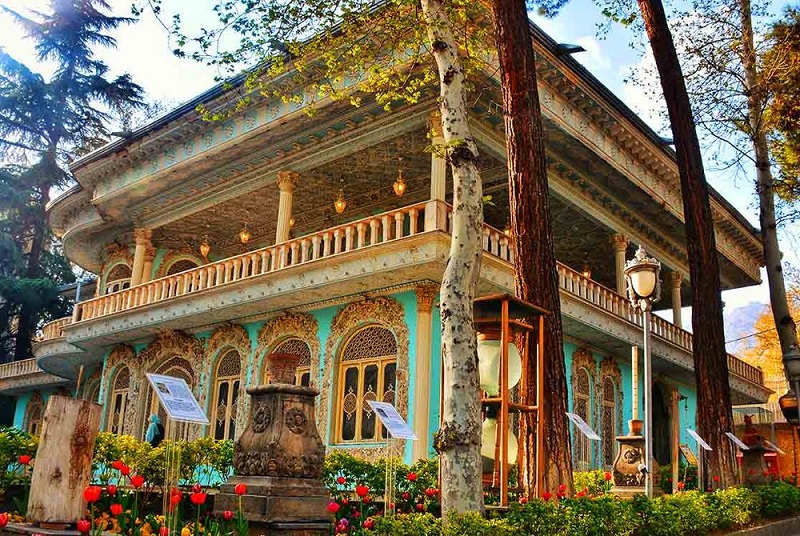Today, technology has come to the aid of museums. Virtual tours of visiting museums, reproduction of works on social networks and visits to famous and prominent museum works have increased citizens’ acceptance of visiting museums.
On the other hand, many museum works have been branded by reproduction in social networks and have led to the attraction of tourists. The most important point is to maintain the security of museums, and technology plays a very effective role in this field.
According to Iran digital economy annotation, various applications related to mobile phones, virtual reality, voice guidance systems, hologram systems, information kiosks and digital displays, 3D modelers, etc. are examples of new methods and up-to-date technologies that are used in world-renowned museums to create a dynamic space. and increasing the level of scientific-applied abilities of the audience is used. But in Iran, the use of these tools is very limited.
Avayar system for audio guide
Navid Salehvand, director of the Water and Pottery Museum said: We have presented two plans for the use of different technologies in the Water Museum, but so far they have not been accepted. We use the Avayar system for audio guidance for audiences and visitors. In this way, visitors connect to the software by installing the relevant software on their mobile phones, and if they do not intend to use the museum guide, they can use the information of this program by paying a fee.
He added: We are following up to launch a website and virtual visit to the museum. We also plan to use the Internet of Things in the museum, which is a long process.
Regarding the use of technology in the restoration of museum works and objects, Salehvand said: We use relevant technology to take short-range photographs of objects. Of course, all the works of the museum have been restored and do not need to be restored. Even the objects inside the tank have been restored.
We should use electron microscope in case study, behaviorology and checking whether things need to be restored or not. Since it is very expensive, only a limited number of this microscope is available in the country. We use a partner laboratory.
He added: We have an optical microscope, but an electron one helps more. Razi Metallurgy Laboratory in Hasan Khan Castle has an electron microscope and we send the samples there for examination.
Using social networks for museums
Alireza Dabirinejad, the director of Malek Museum stated: Museums have always interacted with different media and tried to use the media to express themselves. Nowadays, social networks and digital media are also used by museums.
He added: Now the museums are trying to make it possible to visit the museums online, and virtual tours and virtual museums are among the methods that can be seen inside the museums through the virtual space. Of course, the virtual museum is different from virtual tours and the virtual museum has an independent nature. Virtual museums do not have physical space and exist only in virtual space.
Museums use technology for several different purposes. One of the main goals is to create a fun atmosphere and get a pleasant experience for the citizens. Games and interactive experiences are among these methods.
Digital content production guidelines
Debirinejad said: The International Council of Museums has compiled guidelines such as the guidelines for the production of digital content for the purpose of more use of virtual space and virtual museums. Several conferences have been held in this field in different countries, virtual tours and content production in virtual networks about museums have had millions of annual visits.
He added: Continuous museums continuously attract audiences to museums by working in new media. Even one day in the year is named after the selfie in the museum, which itself leads to the attraction of the audience. Virtual tours and activity in social networks have greatly increased the number of visits to museums.
These two are not competitors and complement each other. The proliferation of Mona Lisa in social networks has not stopped people from visiting it. More reproduction leads to the branding of museum works.
Debirinejad said: We do not have brand works in Iranian museums. Today, postcards and posters have given way to social networks. Google Heritage and NFT are also new technologies that are used in museums, although NFT is mostly used to buy works of art. Through the site and digital data, we can present important works in the world. The works in the virtual space become stickers and it is the cause of reproduction of the works.
He added: In the Hall of Thousand Stories of the Malek Museum, the stories have been turned into podcasts, motion graphics, and animations, and it is a new experience for visitors. In the science hall, we have put the scientific concepts of Avicenna and Maraghi.
Maintaining security with the help of technology
Tale’e Masoleh, the director of the behind-the-glass painting museum also stated: Our museum is very small and we use technology to maintain the security of the works and sell tickets. In terms of safety, technology is helpful. Technological devices even detect cat movements.
He added: ticket sales are done online and paper is not used. The most important issue in museums is security, and technology is a great help in maintaining this issue.




No Comment! Be the first one.